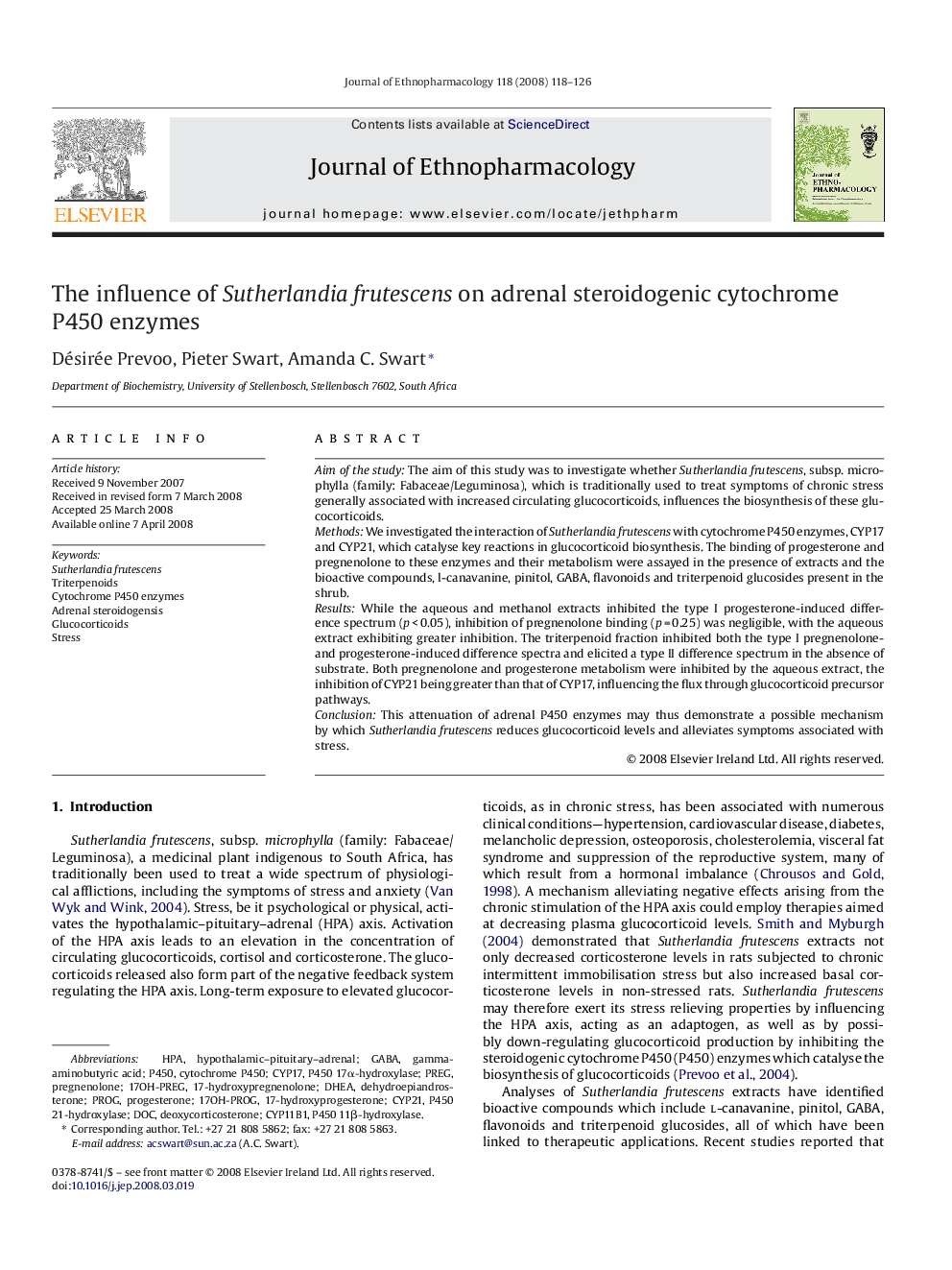| Article ID | Journal | Published Year | Pages | File Type |
|---|---|---|---|---|
| 2547772 | Journal of Ethnopharmacology | 2008 | 9 Pages |
Aim of the studyThe aim of this study was to investigate whether Sutherlandia frutescens, subsp. microphylla (family: Fabaceae/Leguminosa), which is traditionally used to treat symptoms of chronic stress generally associated with increased circulating glucocorticoids, influences the biosynthesis of these glucocorticoids.MethodsWe investigated the interaction of Sutherlandia frutescens with cytochrome P450 enzymes, CYP17 and CYP21, which catalyse key reactions in glucocorticoid biosynthesis. The binding of progesterone and pregnenolone to these enzymes and their metabolism were assayed in the presence of extracts and the bioactive compounds, l-canavanine, pinitol, GABA, flavonoids and triterpenoid glucosides present in the shrub.ResultsWhile the aqueous and methanol extracts inhibited the type I progesterone-induced difference spectrum (p < 0.05), inhibition of pregnenolone binding (p = 0.25) was negligible, with the aqueous extract exhibiting greater inhibition. The triterpenoid fraction inhibited both the type I pregnenolone- and progesterone-induced difference spectra and elicited a type II difference spectrum in the absence of substrate. Both pregnenolone and progesterone metabolism were inhibited by the aqueous extract, the inhibition of CYP21 being greater than that of CYP17, influencing the flux through glucocorticoid precursor pathways.ConclusionThis attenuation of adrenal P450 enzymes may thus demonstrate a possible mechanism by which Sutherlandia frutescens reduces glucocorticoid levels and alleviates symptoms associated with stress.
